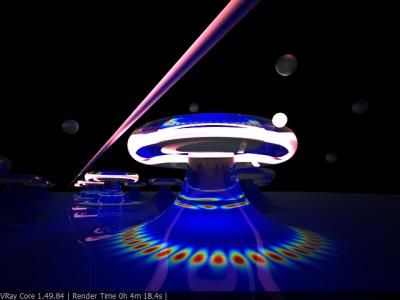SERS increases in creases
Advertisement
Wrinkles are not all bad news according to European scientists, who have used them to improve a spectroscopic technique used to identify molecules.
Luis Liz-Marzán and colleagues have developed a versatile method for making improved SERS substrates. They made a wrinkled strip of a silicon-based organic polymer called polydimethylsiloxane and pressed it into a gold nanoparticle solution on a glass slide. After the solvent had evaporated, they removed the wrinkled ‘stamp’ leaving parallel lines of gold nanoparticles. The gold arrays, per nanoparticle in the substrate, were at least twice as good at enhancing Raman signals compared to conventional SERS substrates, the group claims.
Surface-enhanced Raman spectroscopy (SERS) provides vibrational fingerprints of molecules by using a roughened metal surface (known as a SERS substrate) to enhance the Raman signal. However, because it is difficult to produce uniform SERS substrates, measurements are often irreproducible and so quantitative applications of this ultra-sensitive technique are limited.
Liz-Marzán says her team’s new technique could pave the way for the large scale development of highly sensitive quantitative SERS platforms.
Original publication: Nicolás Pazos-Pérez, Weihai Ni, Alexandra Schweikart, Ramón A. Alvarez-Puebla, Andreas Fery and Luis M. Liz-Marzán, Chemical Science 2010.
Other news from the department science
Most read news
More news from our other portals
See the theme worlds for related content
Topic World Spectroscopy
Investigation with spectroscopy gives us unique insights into the composition and structure of materials. From UV-Vis spectroscopy to infrared and Raman spectroscopy to fluorescence and atomic absorption spectroscopy, spectroscopy offers us a wide range of analytical techniques to precisely characterize substances. Immerse yourself in the fascinating world of spectroscopy!

Topic World Spectroscopy
Investigation with spectroscopy gives us unique insights into the composition and structure of materials. From UV-Vis spectroscopy to infrared and Raman spectroscopy to fluorescence and atomic absorption spectroscopy, spectroscopy offers us a wide range of analytical techniques to precisely characterize substances. Immerse yourself in the fascinating world of spectroscopy!































































